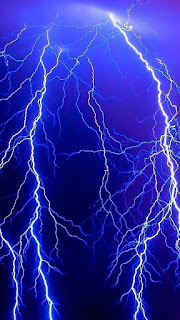Phase Transitions: The Dance of Matter and Energy
Phase transitions, the remarkable transformations of matter between different states, are captivating phenomena that shape the physical world around us. These transitions involve intricate interplay between matter and energy, as systems undergo dramatic changes in properties such as density, structure, and behavior. In this blog, we will embark on an enlightening journey to explore the captivating world of phase transitions, unveiling the secrets behind the dance of matter and energy.
Understanding Phase Transitions: Begin by grasping the fundamentals of phase transitions. Explore the concept of phases and the various states of matter, such as solids, liquids, and gases. Understand how phase transitions occur due to changes in temperature, pressure, or both. Discover the distinct characteristics and behaviours of each phase, setting the stage for the transformative dance of matter and energy.
Types of Phase Transitions: Delve into the different types of phase transitions and their unique characteristics. Explore the familiar processes of freezing and melting, where substances transition between solid and liquid states. Investigate the intriguing behaviour of substances during vaporization and condensation, as gases transform into liquids and vice versa. Uncover more exotic transitions, such as sublimation, deposition, and critical phenomena, where systems undergo dramatic changes at specific conditions.
Energy and Entropy in Phase Transitions: Understand the role of energy and entropy during phase transitions. Explore how energy is absorbed or released when substances change phases, driving the transformation. Discuss the concept of latent heat and how it relates to the energy exchange during phase transitions. Gain insights into the changes in entropy and the balance between order and disorder as matter transitions between different phases.
Critical Points and Phase Diagrams: Explore the concept of critical points and their significance in phase transitions. Investigate phase diagrams and graphical representations that showcase the boundaries between different phases at various temperatures and pressures. Learn about the critical point, where distinct phases merge, and the behaviour of substances becomes unique and fascinating.
Applications and Practical Implications: Discover the practical implications of phase transitions in various fields. Explore how phase transitions play a crucial role in industries such as materials science, manufacturing, and pharmaceuticals. Learn about the importance of understanding phase diagrams for designing and optimizing processes. Discuss the impact of phase transitions on natural phenomena, including weather patterns, geological processes, and the behaviour of substances under extreme conditions.
Phase Transitions in the Universe: Reflect on the grand scale of phase transitions in the universe. Explore how phase transitions played a pivotal role during cosmic evolution, including the formation of stars, galaxies, and even the universe itself. Discuss the intriguing behaviour of matter in extreme environments, such as the transitions between quark-gluon plasma and normal matter.
Phase transitions represent captivating dances of matter and energy, where substances transform between different states and exhibit remarkable changes in properties. By unravelling the principles behind phase transitions, we gain a deeper understanding of the behaviour of matter in various conditions and settings. From everyday phenomena to cosmic events, phase transitions shape our physical reality and provide insights into the intricate interplay between matter and energy. Let us continue to explore and appreciate the mesmerizing dance of matter and energy in the dynamic world of phase transitions.

Comments
Post a Comment